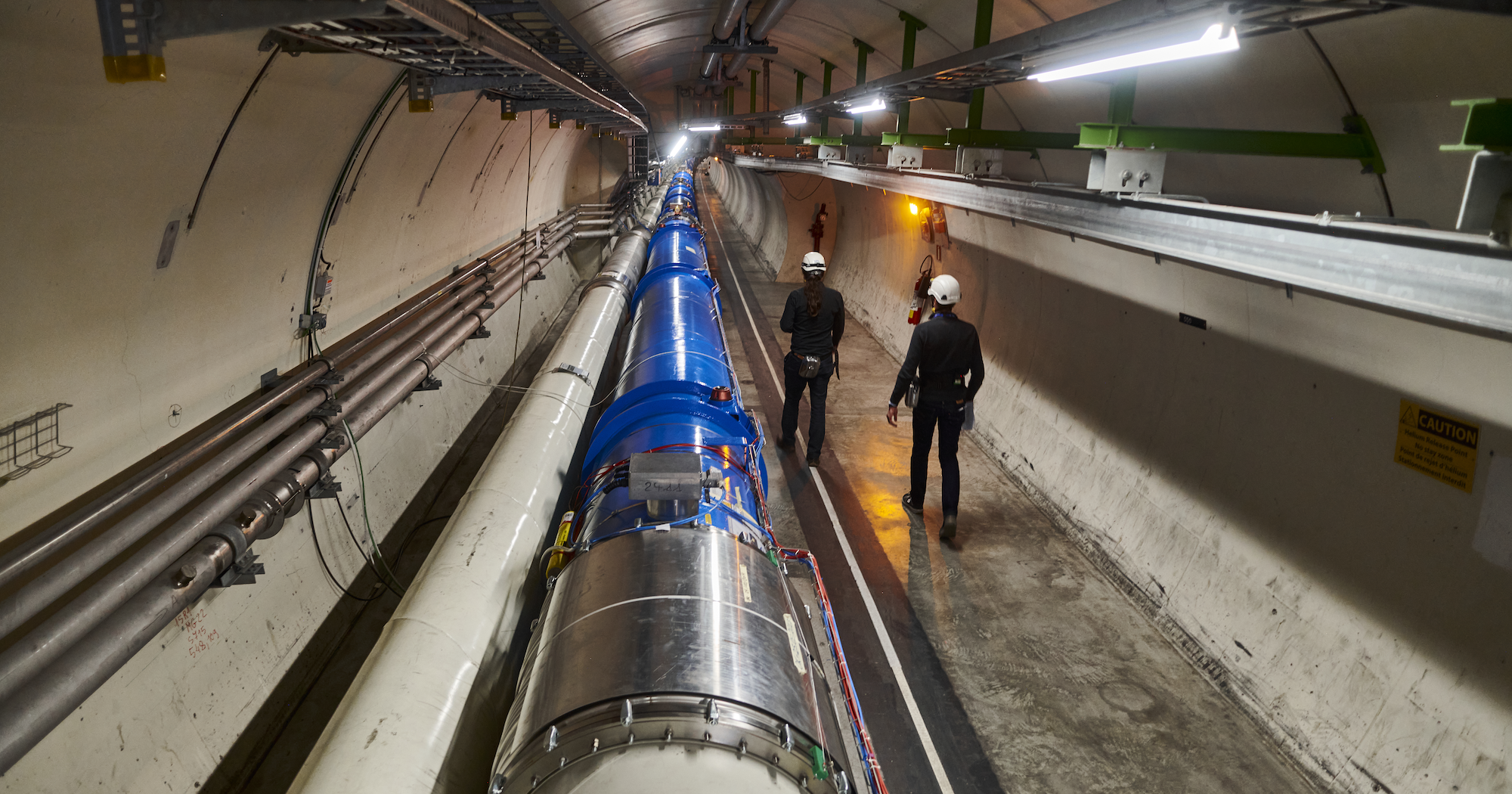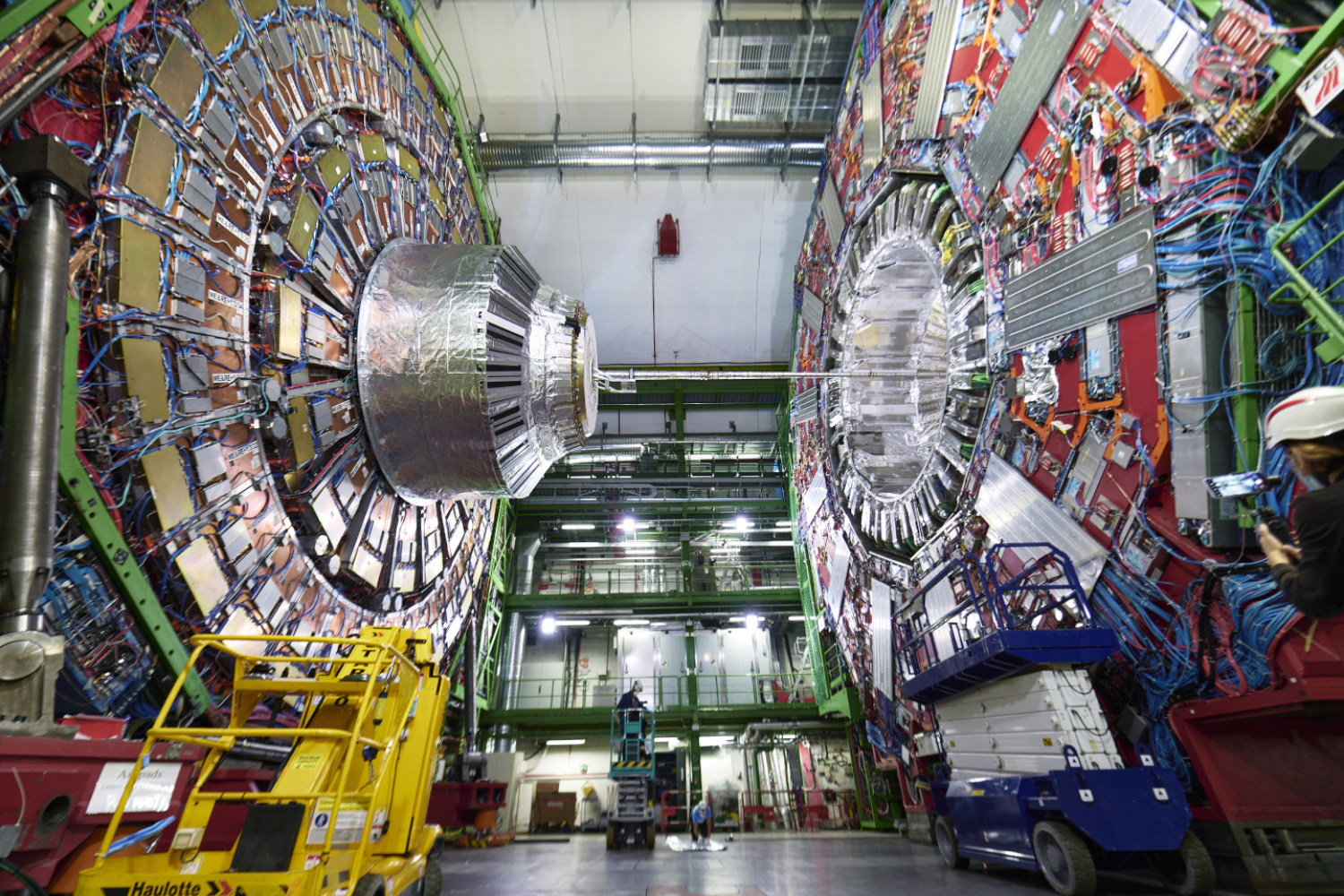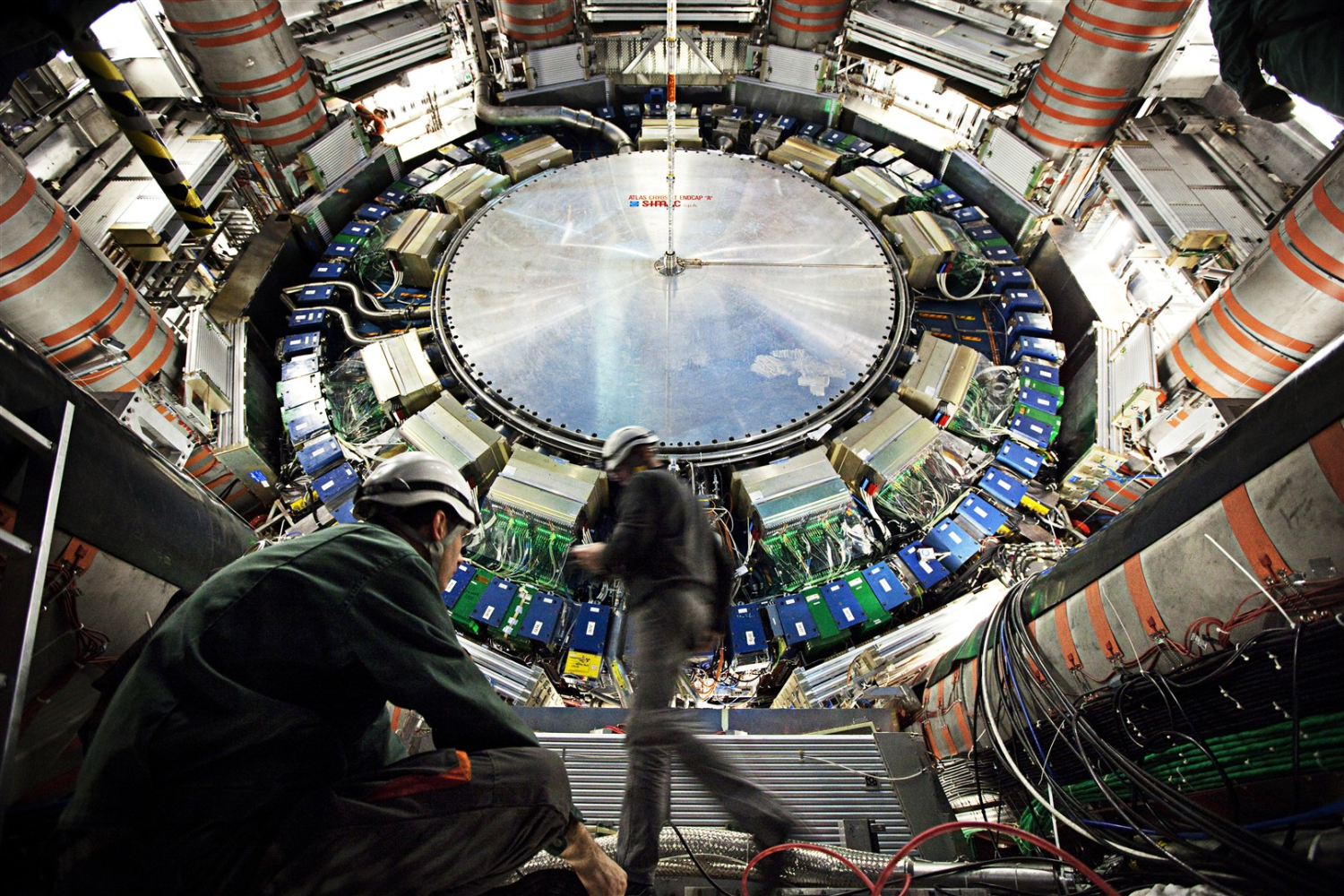Disneyland for physicists: Breakthrough Prize honors scientists at world's largest particle collider

The Large Hadron Collider (LHC) accelerates particles through tunnels stretching roughly 17 miles underground. (Credit: CERN)
For these physicists at CU Boulder, searching for the unknown is a matter of speed.
Over the last decade, researchers on campus, including dozens of graduate and undergraduate students, have taken part in the hunt for never-before-seen physics at the Large Hadron Collider. The facility sits at the base of the mountains of Switzerland not far from Geneva. There, scientists accelerate tiny bits of matter to just below the speed of light, slamming these particles together to create spectacular bursts of energy.

To analyze collisions between particles, the CMS detector generates a magnetic field nearly 100,000 times more powerful than the magnetic field surrounding Earth. (Credit: CERN)

The ATLAS detector sits more than 300 feet underground and weighs more than 7,000 tons. (Credit: CERN)
Recently, their efforts received international recognition. In April, the 2025 Breakthrough Prize in Fundamental Physics went to four international collaborations working at the LHC, which is operated by an organization called CERN. These collaborations encompass thousands of scientists from around the globe, including 32 current and former physicists at CU Boulder. The Breakthrough Prize is an annual award celebrating “individuals who have made profound contributions to human knowledge.”
Researchers at CU Boulder have participated in two LHC collaborations, the Compact Muon Solenoid (CMS) and A Toroidal LHC ApparatuS (ATLAS) experiments. They rely on detectors on site. These massive machines weigh thousands of tons each and analyze what happens when particles collide.
“The magnitude of what’s been accomplished by these teams is staggering,” said John Cumalat, a professor of physics at CU Boulder who was named in the prize through his work in the CMS Experiment.
In 2012 scientists at the LHC discovered a particle known as the Higgs boson, a finding recognized in the recent Breakthrough Prize. The Higgs boson is responsible for giving all matter in the universe its mass. Without it, the cosmos would look very different today. Other researchers at the LHC have used collisions to recreate the incredibly hot conditions that existed in the universe a fraction of a second after the Big Bang.
This year’s prize shows that science is fundamentally a team pursuit, noted Dennis Perepelitsa, associate professor of physics.
“Usually, these kinds of awards go to just a few people working in a lab to make a big breakthrough,” said Perepelitsa, who started the ATLAS group at CU in 2016 and was recognized for his work on the experiment. “But breakthroughs also happen in big teams.”
Like nowhere else
A team on campus called the High Energy Physics Group, for example, monitors crashes between protons, a basic building block of atoms, using the CMS detector.
Team member Kevin Stenson, professor of physics, explained that when protons moving at blistering speeds smack into each other, they generate so much energy that new particles spring into being—literally popping up in space that was empty a moment before. He and his colleagues sift through that wreckage looking for anything that doesn’t seem to belong.
“In physics, we have a basic theory known as the standard model, which has, for decades, explained the universe extraordinarily well,” said Stenson, who was also named in this year’s Breakthrough Prize. “But we know it’s incomplete. It’s missing pieces. So we’re looking for physics beyond the standard model—anything that looks odd or anomalous.”
CU Boulder at the LHC
Thirty-two current and former physicists at CU Boulder were named as part of the 2025 Breakthrough Prize in Fundamental Physics, which recognized four international collaborations.
CMS Experiment
- Faculty: John Cumalat, Kevin Stenson, Keith Ulmer, Steve Wagner, Bill Ford (emeritus)
- Postdoctoral researchers: Andrew Hart, George Karathanasis, Stephanie Kwan, Nick Manganelli, Filippo Marini, JaeBeom Park, Rishi Patel, Jannicke Pearkes, Alexx Perloff, Claire Savard, Davide Zuolo
- Graduate students: Abbas Hassani, Emily MacDonald, Nicolas Schonbeck, Noah Zipper
ATLAS Experiment
- Faculty: Jamie Nagle, Dennis Perepelitsa
- Postdoctoral researchers: Ran Bi, Yeonju Go, Qipeng Hu, Sanghoon Lim, Christopher McGinn
- Graduate students: Sruthy Jyothi Das, Berenice Garcia, Kurt Keys Hill, Jeff Ouellette, Blair Daniel Seidlitz
Keith Ulmer, associate professor of physics who was recognized for his work on CMS, is part of efforts at the LHC to search for the origins of dark matter. This mysterious substance pervades the universe, making up roughly 84% of its mass and gluing together entire galaxies. But scientists have never directly observed it.
“You can’t do LHC physics anywhere else,” Ulmer said. “It’s the only machine on Earth that can access these kinds of particles.”
Dawn of the universe
Perepelitsa and his colleagues, including Professor Jamie Nagle, in the Experimental Nuclear Physics Group at CU Boulder use the ATLAS detector to go bigger.
Rather than examine collisions between protons, these researchers explore impacts between the much bigger cores, or nuclei, of atoms like lead.
Those collisions generate so much heat, reaching temperatures of more than 1 trillion degrees Fahrenheit, they create what physicists call a “quark gluon plasma.” This flowing soup of particles existed microseconds after the Big Bang. It can also move like a liquid but, unlike water, experiences almost no friction.
“If you could put a quark-gluon plasma in a coffee cup, and you stirred it, it would continue swirling for an extremely long time,” Perepelitsa said.
He and his colleagues are investigating the basic properties of this swirling state of matter—with the goal of understanding the conditions that gave rise to the universe as we know it today.
Perepelitsa added that a lot of the appeal of LHC research is getting to travel to Switzerland and work in large teams of scientists. For people who love physics, there’s no place like it on Earth.
“If you’re a young scientist and are willing to work hard, it’s like Disneyland,” he said. “In the hallways, the cafeteria and the lecture halls—everybody around you is a particle physicist.”


